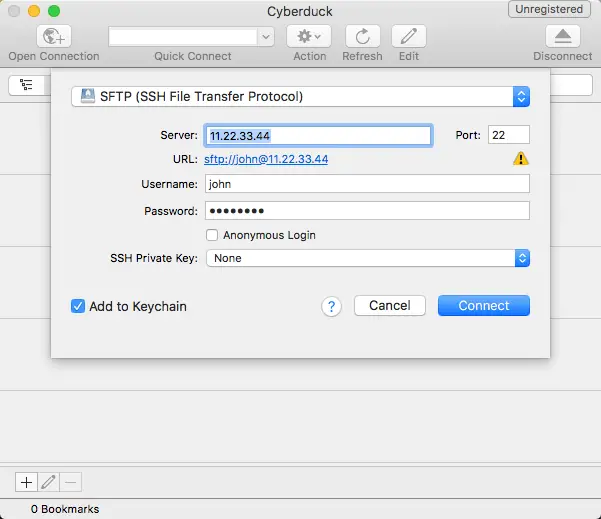
#RESTART SSH ON MAC OS UPGRADE#
UBNT-BZ.v4.3.20# upgrade Downloading firmware from ''.
#RESTART SSH ON MAC OS HOW TO#
I will show here how to get or set the ssh password for a Network Management Controller registered device.
#RESTART SSH ON MAC OS DOWNLOAD#
To be able to download the latest firmware, it can be useful to know how to set networks parameters. From Network Settings > Device Authentication menu, you will have the possibility to show or set the ssh password :.From there you will have the possibility to show or set the ssh password : Still from Site menu, you should now see the Device Authentication section.From Site menu, check Enable advanced features and click on Apply Changes :.From the Network Management Controller, go to settings :.Once we have the IP Address, we can connect through ssh (default login/password : ubnt / ubnt) ssh -l ubnt 192.168.1.20 ssh password for already registered devices.

If you don't know how to get the IP Address of your APs, you can use the Ubiquiti Device Discovery tool to find it. Now enter the following to restart timbuktu: sudo /System/Library/Frameworks/amework/Versions/ A/Support/LaunchCFMApp '/Applications/Timbuktu Pro/ Timbuktu Pro.app/Contents/SharedSupport/Timbuktu Extension' & The above should be entered as one long line, and the only spaces are after sudo and before '/Applications.I will put here the ssh commands for Ubiquiti WiFi AP that I use.Ĭonnect to AP via ssh Ubiquiti Device Discovery Now kill the Timbuktu process (make sure to substitute the process ID for your Timbuktu, and don't use "377" as shown): sudo kill 377You will be asked for the root password when you do this.
:max_bytes(150000):strip_icc()/macos-high-sierra-recovery-mode-reinstall-5c676ce0c9e77c00012e0e65.jpg)
Next, we need to find the process ID (PID) of Timbuktu: ps -auxYou can quickly find the process ID of the Timbuktu host by finding "Timbuktu" with the Terminal's find function ( robg adds: or just add | grep "Timbuktu" to the end of the above command). Open a terminal window and connect to the remote host via ssh: ssh will be asked to provide the password for the remote computer. Instead it is started on-demand by launchd when the Sharing -> Remote Login service is enabled, and an incoming connection is made from a client to the sshd port.

This hint assumes that the remote host has "Remote Login" enabled. On Mac OS-X sshd is not running standalone (i.e. Here is a way to restart the remote Timbuktu service via the Terminal. In previous versions of mac OSX, ssh-agent used to remember the passphrases for the keys added to the keychain (with ssh-add -K ) and after a reboot (or logout/. Your tests (ps aux, launchctl etc) won't help - the issue is on the remote host, not the local (you've got an SSH client, because you can connect to localhost, but the remote host 14.139.82.8 isn't allowing connections on port 22). I administer a remote server via Timbuktu, but occasionally the Timbuktu host stops responding. Your remote host probably doesn't have an SSH server running (or, if it does, it's not listening on port 22).


 0 kommentar(er)
0 kommentar(er)
